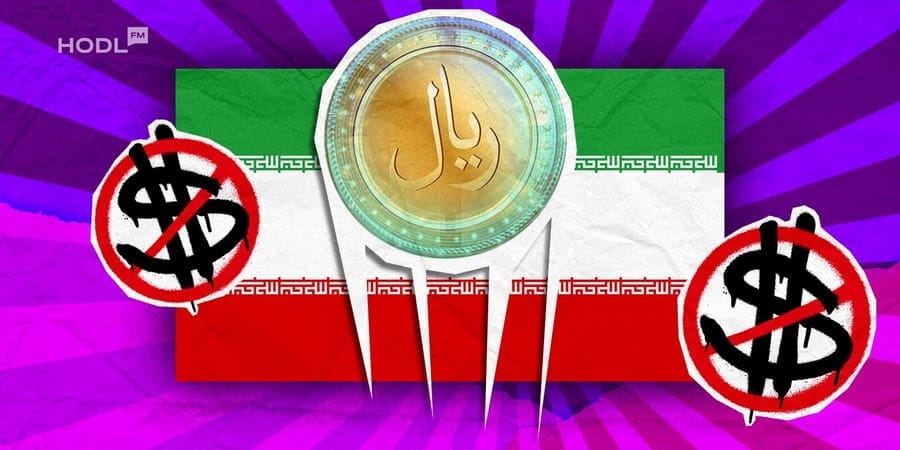Iran has quietly evolved into one of the world’s largest cryptocurrency mining hubs, fueled by cheap electricity and the desire to bypass international sanctions. Yet, this rapid expansion has created severe energy and regulatory problems that authorities are now struggling to control.
Interest in cryptocurrency surged after 2017, when U.S. and international sanctions effectively barred Iran from global banking and payment systems. As traditional financial routes closed, many Iranians turned to Bitcoin and other digital assets as a way to move money internationally and protect their wealth.
Today, Iran accounts for about 4.2% of global Bitcoin mining power, ranking fifth in the world behind the U.S., Kazakhstan, Russia, and Canada. This figure has declined from a 7.5% share in 2021, but it remains significant given the scale of unlicensed operations. Roughly 22% of Iranians are estimated to own or use cryptocurrency, around 10 million people nationwide.
The appeal lies in profitability. With electricity costs as low as $0.01 to $0.05 per kilowatt-hour, Iranian miners can produce Bitcoin for about $1,300 per coin, a fraction of its market price, which has traded above $100,000 in 2025. But this cheap power, largely subsidized by the government, has created an incentive for widespread illegal activity.
Illegal mining strains Iran’s power grid
Official estimates suggest that around 427,000 active cryptocurrency mining devices operate across Iran. Shockingly, about 95% of them function without proper authorization, tapping into subsidized electricity or disguising themselves as industrial facilities to secure cheaper rates.
Akbar Hasan Beklou, CEO of the Tehran Province Electricity Distribution Company, described the situation bluntly:
“Iran has become a paradise for illegal miners.”
He explained that unauthorized mining operations consume more than 1,400 megawatts of electricity around the clock, equivalent to the output of two nuclear reactors.
This relentless power consumption is straining Iran’s already fragile energy grid and exacerbating frequent blackouts. The national power company attributes 15%–20% of the country’s electricity shortages to unlicensed crypto mining.
Beklou noted that illegal miners often hide their operations in “underground tunnels, industrial zones, and abandoned factories.” In Tehran Province, “104 illegal farms have been discovered, and 1,465 machines have been seized,” he said. Their combined electricity use, around 3,359 kilowatts, equal to what nearly 10,000 homes consume, has had a measurable impact on grid stability.
Authorities intensify enforcement
Iran legalized cryptocurrency mining in 2019 as a means to create revenue during sanctions, but authorities quickly realized that most miners were bypassing licensing systems to benefit from cheap, state-subsidized energy. The Ministry of Energy and the state-run electricity company Tavanir have since led nationwide crackdowns.
Security and inspection teams regularly raid suspected mining sites, especially in known hotspots such as Pakdasht, Malard, Shahre Qods, Kahrizak, and the industrial areas of southwestern Tehran. In the first half of 2025 alone, officials uncovered 80 unauthorized farms containing 1,300 mining devices, consuming electricity equivalent to that used by approximately 8,000 households.
To combat the issue, the government now rewards citizens who report illegal operations. Mostafa Rajabi Mashhadi, CEO of Tavanir, announced that informants receive 1 million toman (about $24) for every unauthorized mining device reported, effectively turning local residents into energy watchdogs.
Balancing economics, sanctions, and energy needs
Iran’s challenge lies in balancing its economic necessity with infrastructure limits. On one hand, mining offers a pathway to earn hard currency and fund imports despite sanctions. On the other, blackouts caused by power shortages have intensified public frustration and disrupted legitimate industries.
Energy officials warn that illegal mining operations have stolen vast amounts of subsidized electricity meant for agriculture and m anufacturing. Legitimate, licensed miners meanwhile face high tariffs that make legal mining economically unfeasible, pushing even compliant operators toward the black market.
Beklou emphasized that his organization, alongside law enforcement and the security ministry, continues to inspect and monitor facilities daily. Still, the scale of underground activity, spanning thousands of devices nationwide, makes full enforcement difficult.
As Iran’s rial continues to depreciate and inflation erodes savings, ordinary citizens see cryptocurrency as both an escape and a lifeline. But without stricter oversight and energy reforms, the nation’s crypto boom risks deepening its power crisis, turning a financial workaround into a long-term threat to stability.

Disclaimer: All materials on this site are for informational purposes only. None of the material should be interpreted as investment advice. Please note that despite the nature of much of the material created and hosted on this website, HODL FM is not a financial reference resource, and the opinions of authors and other contributors are their own and should not be taken as financial advice. If you require advice. HODL FM strongly recommends contacting a qualified industry professional.





